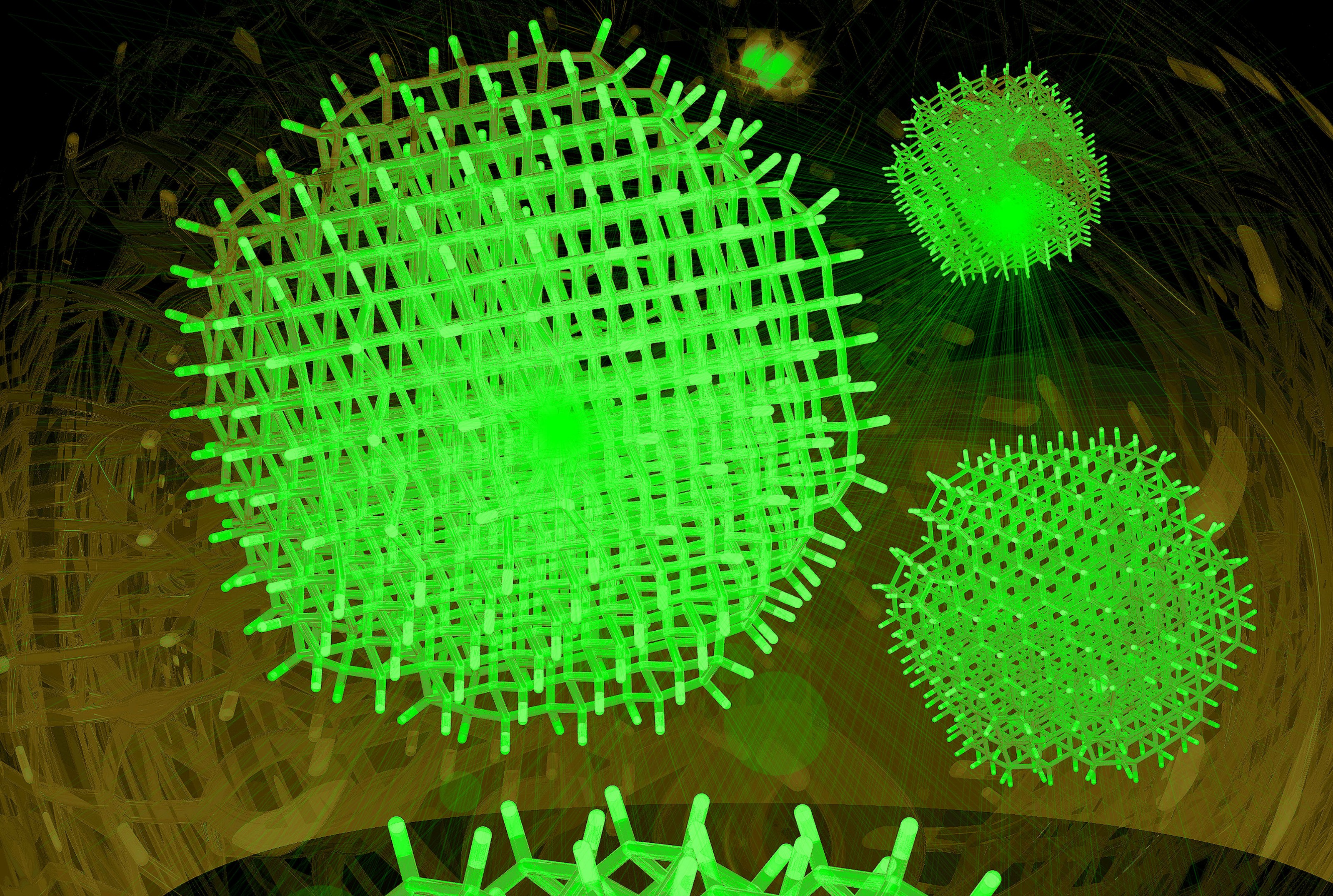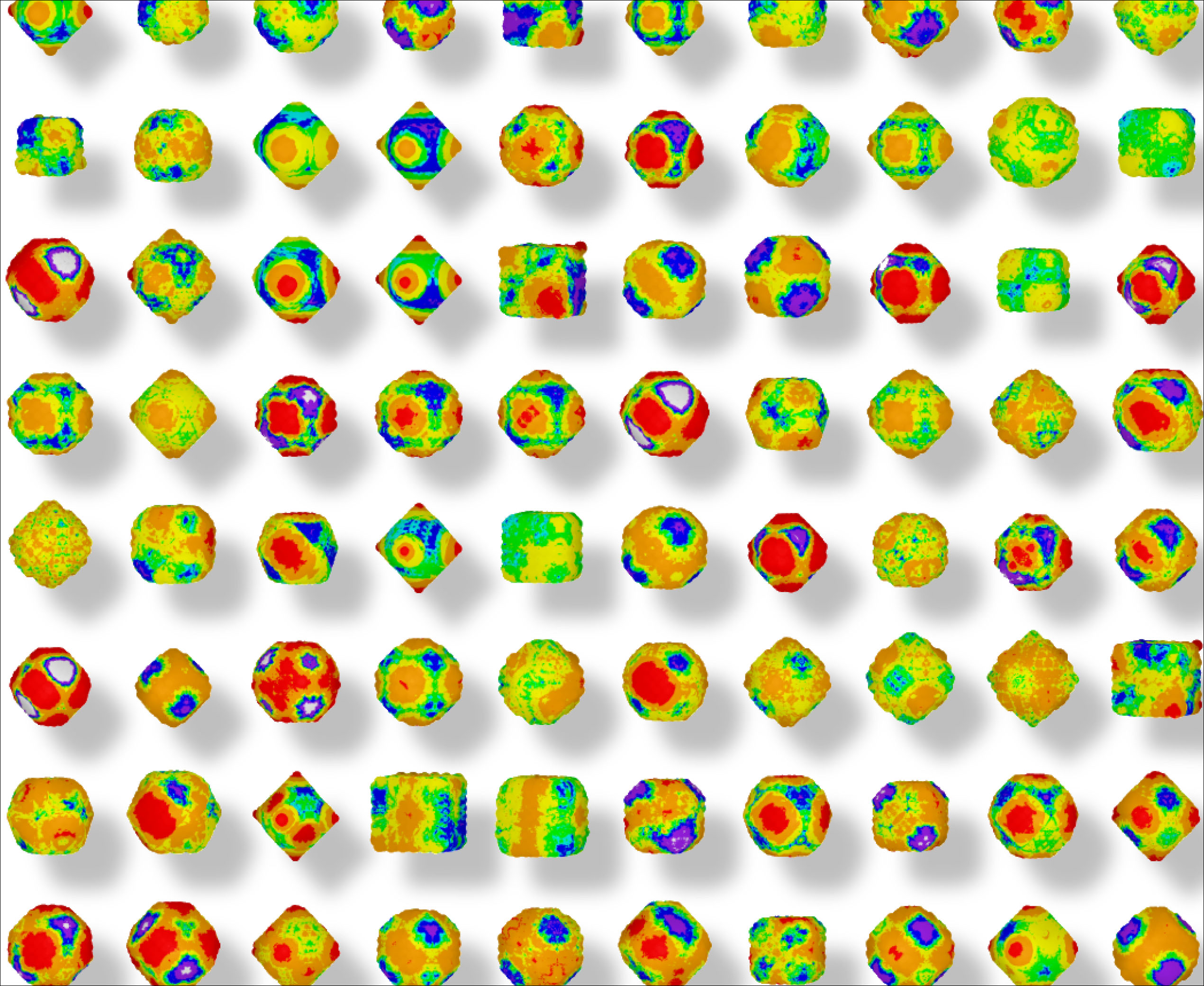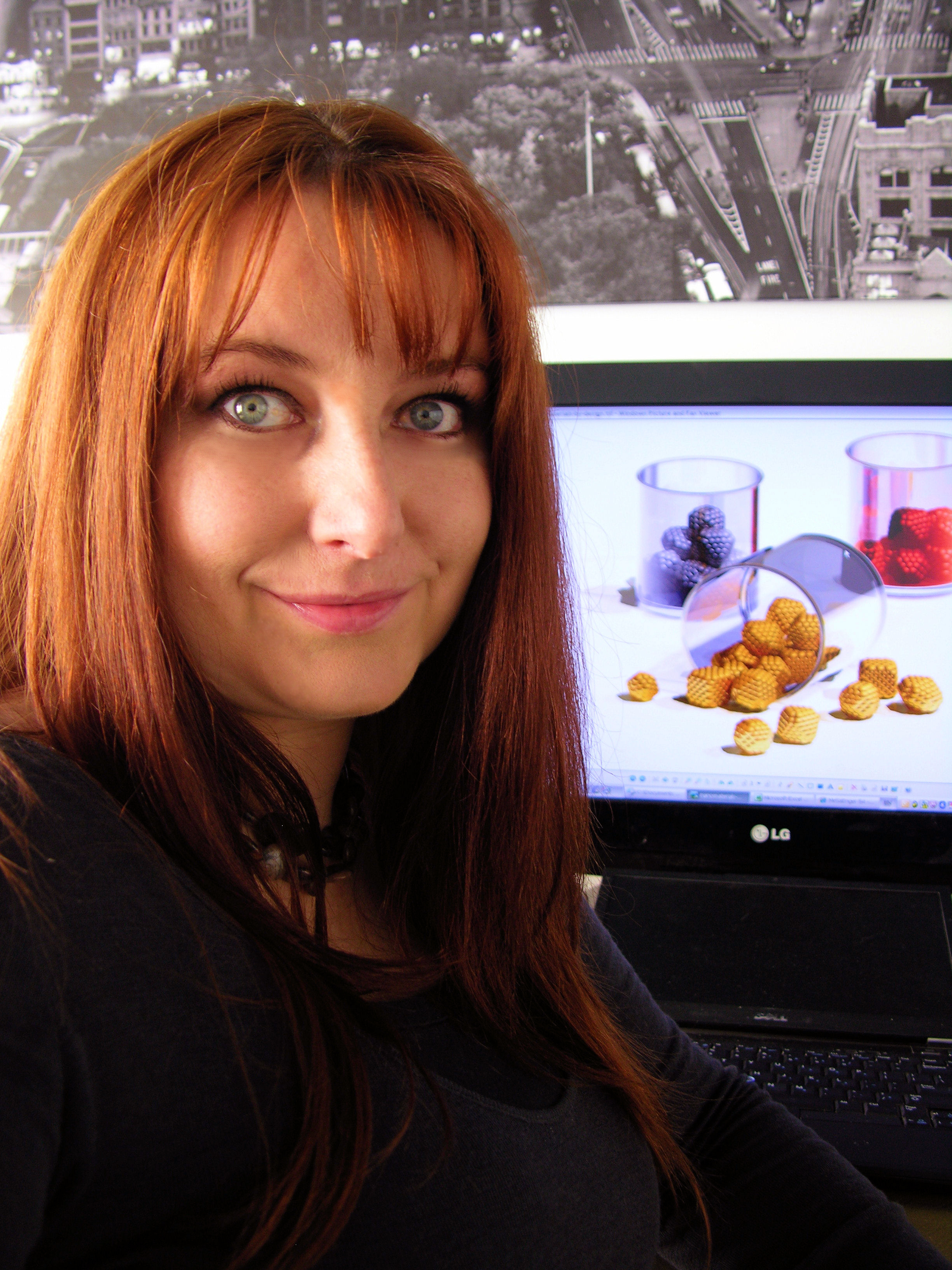
Quantum dots: Doing the stats on nanoparticles could lead to life-changing products.
A nanoparticle is one billionth of a metre. It might be hard to appreciate how small that is, but our resident virtual nanoscientist Amanda Barnard understands this “invisible” world.
So it’s no wonder that today the Foresight Institute announced Amanda as this year’s awardee of the prestigious 2014 Feynman Prize for Nanotechnology (Theory) – it’s like the Nobel Prize of the nanoscience world.
Amanda is the first female and first person in the southern hemisphere to win the international Feynman Prize.
Not only is Amanda the first Australian in the Prize’s 22-year history to win the award, she’s also the first woman, shining a much-needed spotlight on the achievements of women in science.
The award is named after Richard Feynman a renowned physicist and Nobel Prize winner from last century: the father of quantum electrodynamics.
Amanda’s award winning work required the use of powerful supercomputers to make the most of decades of big data on tiny nanoscience, gaining insights that might one day lead to extraordinary, life-changing products.
We’re thinking: self-cleaning surfaces, fuel cells for harnessing energy, printable inks that conduct electricity, and new drugs to cure life-threatening illnesses. These are just some of the incredible possibilities.
Just a few years ago, Amanda made a fundamental discovery on diamond nanoparticles, finding that they have unique electrostatic properties that make them spontaneously arrange into very useful structures, with huge implications for improving healthcare.

This isn’t Bejeweled, this is Amanda’s award-winning discovery on diamond nanoparticles. The colours show where the diamonds connect, kind of like a jigsaw puzzle.
Already, her diamond discovery has underpinned the development of a potentially life-saving chemotherapy treatment that targets brain tumours, created by the UCLA (University of California, Los Angeles).
Among her other research highlights, Amanda developed a new technique for investigating the shape of nanomaterials including their size, temperature or potential uses in chemistry. This means we can tailor them to make bespoke nanoparticles targeted to specific application areas.
Before Amanda sets off for California next month to pick up her award, she shared with us some more insights about her work at the nanoscale.
What do you enjoy most about your job?
I enjoy our current move into big data. Going into big data sets to identify trends between nano properties and structures is like finding buried treasure. It’s exciting when you can see the forest for the trees and get a moment of clarity, when all the data collects. Those moments are really interesting and I look forward to having more of them.
I also love that science is reinventing itself all the time. It never becomes complacent and will always be exciting as it continually evolves. One finding always leads to another question.
How does your work impact on product design and development?
I use statistics to determine how well certain tiny material structures will perform under specific conditions. By predicting how imperfections at a molecular level impact on performance, we can design products with less susceptibility to faults from the outset. We can also design ‘molecular machines’ that can perform more familiar tasks, like cogs in a watch; they are an integral component that can enhance or improve products.
What would you say has been the highlight of your career so far?
This prize is definitely a career highlight and I’m thrilled! This would have to be up there as a career highlight for anybody working in nanotechnology.
What is the biggest challenge you’re grappling with in your role at the moment?
Implementing our science on the cloud is the biggest technical challenge for us at the moment. The data is so big and the skill set is so new and so specific. The cloud would provide easy open access to results amongst our research peers and we need to do this to collaborate and make the most of all the research data that’s available.
Where would you like to see your research /science go or lead to in future?
I don’t want to know. I hope I’m not able to predict where science goes, rather I want to be surprised of where it takes us next, and enjoy the ride.
Find out more about Amanda’s work at our virtual nanoscience lab.



24th June 2015 at 10:15 am
Now that blood protine 57 has been found and identified we can start to work on smashing the cancerous cells amoung others as the range from genotype 13–26 is now on the table for this is a big break through.
24th April 2015 at 3:54 am
Interesting and mind blowing tec as to be able to encapsulate a nanobot on a white cell and have it programed to kill off x- proteins to stop or even eradicate a infection or disease is perplexing tec. This lady deserves more funding as it’s ground breaking work that is being done.